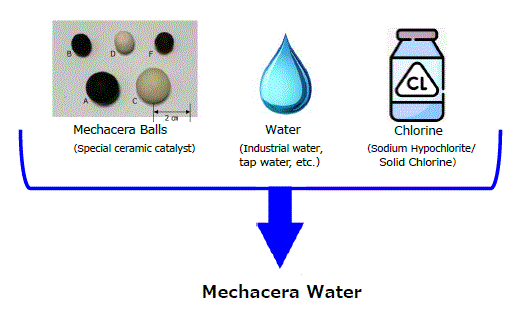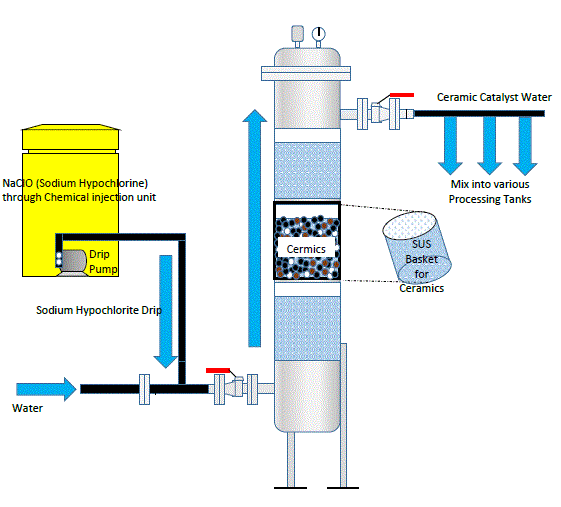
History and Background
The MECHACERA System, our flagship technology, was jointly developed in 1983 through collaborative research between Tohoku University and Seisui Corporation.
At the heart of this system lies an innovative Superoxide Ion generation method, designed for advanced water purification applications. It has proven highly effective in treating waste oil, deodorizing, purifying water, and reducing sludge in human waste and various domestic wastewater—especially within agricultural communities and sewage systems.
MECHACERA delivers consistent purification quality with low operating costs and requires no modification to existing infrastructure. Since its launch over 30 years ago, this system has been widely adopted in facilities operated by major Japanese manufacturers, local governments (such as agricultural wastewater treatment plants), and clients across multiple countries.
Key principles
Photooxidation catalysts such as Titanium oxide are gaining widespread attention due to their recognized multifunctional capabilities. However, Titanium oxide requires ultraviolet (UV) light to activate its oxidizing potential and generate strong active oxygen. Without light energy, these catalysts become completely inactive—unable to perform in dark or aquatic environments.
The Mechacera system provides a groundbreaking alternative. By introducing a small amount of chlorine (in the form of Sodium Hypochlorite) to our proprietary advanced ceramic catalyst, active oxygen—specifically Hydroxy Radicals—can be reliably generated even in water. This process harnesses the chemical energy of Chlorine, which activates the ceramic material without the need for light.
This unique mechanism enables powerful oxidizing action in conditions where conventional photooxidation catalysts fail—such as in water or environments where light is absent—offering performance comparable to titanium oxide under UV exposure.

This is a "Catalytic Reaction" obtained by bringing the above three elements into continuous contact. As a result, "Mechacera Water" is generated, and when the Mechacera Water is passed through waste water (circulating water, etc.), it bring various effects such as scale removal, oxidative decomposition, deodorization, and sterilization.
Chemical Reaction is as follows;
NaClO (Sodium Hypochlorite) + H₂O (Water) → NaOH (Sodium Hydroxide) + HClO (Hypochlorous Acid)
HClO (Hypochlorous Acid) → HCl (Hydrochloric Acid) + [O] (Nascent Oxygen)
■ [O] is nascent oxygen that exhibits a strong oxidizing effect
■ pH adjustment (H⁺ reduction reaction)
Referential Data: Completion of water supply and drainage pipes to prevent Red water
Mechacera device - Standard Outline
We have a lineup of large devices and simple and Economical Models that fill stainless steel pipes with Ceramic Catalysts for Agricultural Wastewater Treatment Plants, Industrial Wastewater Treatment, and other large-scale wastewater treatment.
